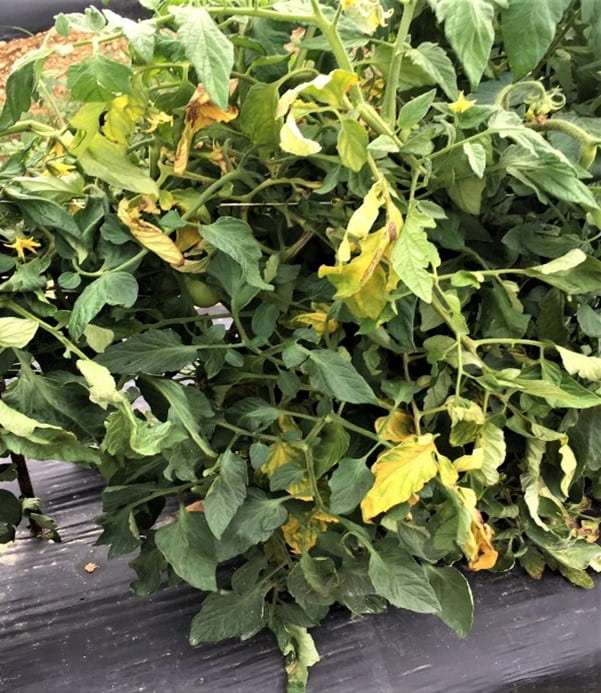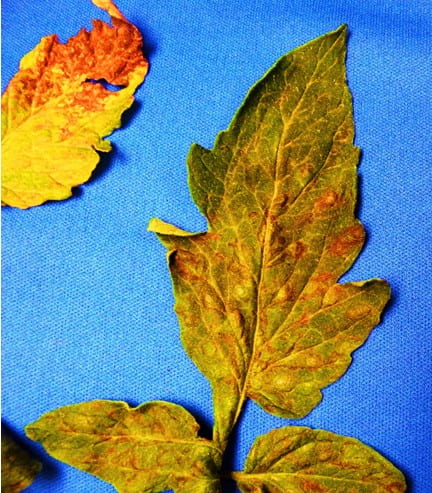Unusual Disease of Garlic Scapes Found in Maryland
By Jerry Brust, UME and Karen Rane, UMD Plant Diagnostic Lab
A grower noticed over the last few years lesions developing on their garlic scapes which then collapsed in the field. In previous years these collapsed scapes amounted to only a small number, but this year the losses are much greater approaching 30%. Symptoms consist of sunken lesions about ¼ to ½ inch long, that cause twisting, girdling and collapse of the scape. Lesions initially are cream to tan-colored but under rainy or very humid conditions, spore production by the fungus causes lesions to turn orange (fig 1). This disease is anthracnose of garlic, a new disease to Maryland and is caused by the fungus Colletotrichum fioriniae. The fungus may survive on crop residue in the soil from a previous garlic crop or the disease may be spread by infected bulbils used for propagation. Disease development is favored by rainy or very humid weather and warm temperatures (78-88o F). Anthracnose of garlic does not affect bulbs, but scape yield could be reduced as will bulbil production.

Reports from New England indicate that onion is most likely not affected by this fungus. C. fioriniae has also been reported as causing bitter rot on pear and anthracnose on celery and cherry tomato. Crop rotation away from any member of the onion family may help reduce disease incidence. Besides crops, weeds such as common lambsquarters, redroot pigweed, yellow nutsedge and common groundsel may also be infected with the pathogen but be symptomless. Because this is such a new disease of garlic, fungicide recommendations have yet to be determined. However, products that are labeled and effective against purple blight of onion may be useful against this disease.

